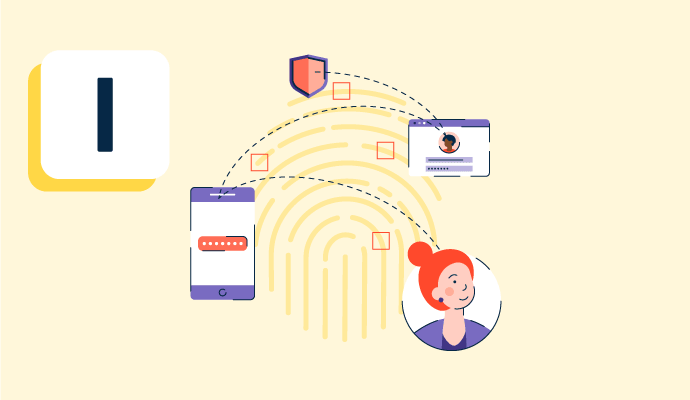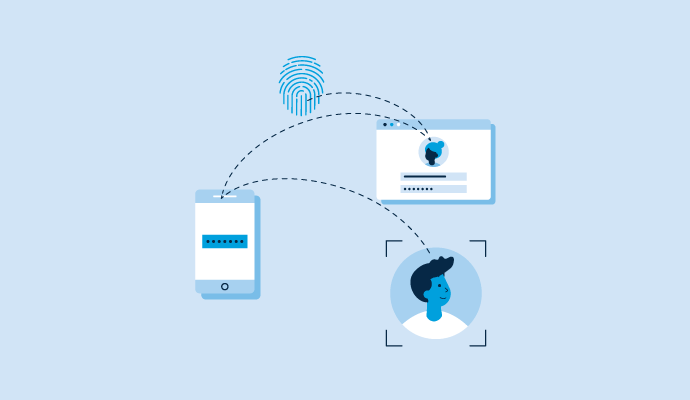What is identity and access management?
Identity and access management (IAM) is a way for businesses to control which employees have access to various systems and tools, while protecting confidential information from those who don’t need access.
Through identity and access management software, system administrators manage employee access to necessary apps and tools from one centralized program, rather than logging into each application at the administrator level. Admin can also run reports with the IAM program to determine app usage and activity as they monitor for compliance with existing company policies.
As part of a wider cybersecurity practice, identity and access management simplifies business operations, increases worker productivity, and protects vulnerable data.
Basic elements of identity and access management
Within any IAM tool, several basic functions must be possible for the system to effectively manage identities and access from both a security and productivity perspective. These are:
- User authentication. The key part of securing any system within the business is being able to identify and authenticate any user who tries to access the tool. Features like multi-factor authentication may be needed for the IAM software to confirm that users are who they say they are.
- User profile configuration. As employees enter and leave the business, the IAM software must have capabilities to create, update, and remove users. Some features, like changing a login password, may be accessible by the employee themselves, while others may only be accessible by system administrators.
- Single sign-on (SSO). One of the benefits of IAM is the ability to sign into multiple systems via one access point. An SSO means that users can log in through the IAM software and directly access everything they need.
- Auditing and reporting. A critical part of IAM is ensuring that any errors or suspicious behaviors are identified and that action is taken as quickly as possible. IAM software should have auditing and reporting functions that support compliance with any internal or legal policies and procedures.
Benefits of identity and access management
A centralized IAM process brings numerous benefits to an organization. These include:
- Security protections for confidential data. Many IAM systems have options for encrypting data, alongside their built-in identity authentication measures. This safeguards important company data, not only from external cybersecurity threats, but from possible internal data breaches.
- Improved efficiency for internal IT teams. Resetting passwords or helping employees unlock their user accounts become tedious and time-consuming tasks for IT professionals. IAM tools often allow users to make these small updates on their own, which frees up the IT team for more important tasks that contribute to operations.
- Greater collaboration between departments. When different departments, and even outside vendors, have the correct access to necessary systems, projects are completed more efficiently. IAM means that anyone who needs access can have access, with boundaries in place to prevent additional data from being shared with those who don’t need access to it.
Best practices for identity and access management
The IAM market is predicted to grow by more than 15% in the next three years as cybersecurity threats continue to rise. Businesses that are incorporating IAM practices should consider:
- Implementing zero-trust models. It’s always better to assume that no employee is trustworthy when it comes to protecting confidential information. Good IAM software should come with activity tracking and authentication checks to keep data out of the wrong hands.
- Moving to passwordless systems. Even the strongest passwords can be compromised. Passwordless systems use other forms of authentication that are harder to move beyond if someone is attempting to steal an employee’s identity. For instance, biometric logins like facial recognition or fingerprints are more secure.
- Conducting regular audits. Much like regularly backing up data, conducting audits should be a high priority. Audits ensure that systems are working as expected and that any errors are corrected as close to immediately as possible.
- Continually reviewing compliance regulations. Regulatory compliance changes quickly, particularly for businesses operating in Europe under General Data Protection Regulation (GDPR) or in California with the California Consumer Privacy Act (CCPA). Companies must make sure that IAM practices are still within compliance.
Identity management vs. access management
As the name indicates, IAM systems provide solutions for both identity and access management, but they have important distinctions. Identity management confirms that users within the system are who they say they are. The identity database stores details like name, job title, team, and management level to authenticate the employee’s identity. This database is updated as team members come and go.
Access management then uses that identity information to determine which tools and software employees should have access to and to what extent. For instance, a manager may approve the timesheets of the people they supervise, but they might have to wait for their supervisor to approve or update their timesheet.
Improve employee productivity with single sign-on (SSO) solutions that quickly authenticate login credentials.

Holly Landis
Holly Landis is a freelance writer for G2. She also specializes in being a digital marketing consultant, focusing in on-page SEO, copy, and content writing. She works with SMEs and creative businesses that want to be more intentional with their digital strategies and grow organically on channels they own. As a Brit now living in the USA, you'll usually find her drinking copious amounts of tea in her cherished Anne Boleyn mug while watching endless reruns of Parks and Rec.



















